When you hear the words “home security,” the odds are that you’ll start thinking about security systems, but it’s much more than that. Home security is not just about products—it’s a type of mindfulness you fit into everyday life.
Your home is a safe harbor where you weather the storms of life, from exhausting jobs to high gas prices to actual bad weather. Home security helps you think about how to protect that safety. Sadly, home security is sometimes about getting that safe place back after a break-in and doing your best to make sure it never happens again.
Covering everything means there’s a lot of information, so we’ll focus on the fundamentals of home security. We also added tons of links to SafeWise articles that explore these topics in depth so you can use this guide as a reference in the future.
Learn about home security

Why home security matters
Whether you rent or own your home, it’s a refuge from all the scary things outside your door. But it takes a lot of vigilance to protect your home from threats. Threats can come from anywhere, but knowing what they are and how to ward them off is a huge comfort.
We could trot out statistics about burglaries, but there’s something more important: Once you know the motivations driving burglars and the things they look for, you start to understand home security as an essential mentality to strive for.
The biggest threat to your home’s security is a burglar looking for a quick score. If a burglar can’t get in fast enough or when nobody’s around, then the risks outweigh the rewards. Most burglaries aren’t elaborate heists with weeks of planning—they’re a mad dash with almost no prep.
Free ways to jumpstart your home security
You don’t need to start with a burglar alarm right away (especially if you’re waiting for it to come in the mail). A burglar alarm is a helpful tool, but you don’t need it to build good home security habits.
Here are some ways you can improve your home security without spending money.
Learn what to do if a burglar strikes
1. Leave the house and call 911. Always call the police if a burglar strikes your home, even if you think they’re long gone.
2. Don’t touch anything. This helps protect crucial evidence the burglar might leave behind.
3. Wait in a safe place. Get in your car or go to a neighbor’s house until the police show up.
4. Take inventory. Find out what the burglar took so the police can file a report and you can make an insurance claim.
5. Take care of kids and pets. A break-in is hard on everyone, so you may need to find ways to help kids and pets cope with the emotional aftermath.
6. Clean up and get back to “normal.” Getting back to normal is a physical and mental process—it’s not about forgetting, but learning.
7. Prepare for the future. Learn more about home security and what you can do (unless you started with this sentence, you’re already on track).
8. Survey your home’s security. Scour every inch of your home with a thorough security assessment (see next section).
Conduct a home security assessment
A security assessment explores the small things that paint a picture of your house’s security like the types of locks you use, if someone can reach your windows, and if you know your neighbors (or roommates). If you don’t have a security mindset, it’s easy to miss gaps in your security. If you want to learn to spot the holes, check out our home security checklist.
After you finish your assessment, apply what you learned and build some new habits:
- Set reminders on your smartphone to turn on lights at night.
- Lock the door every time you go in or out.
- Look for opportunities to improve your security.
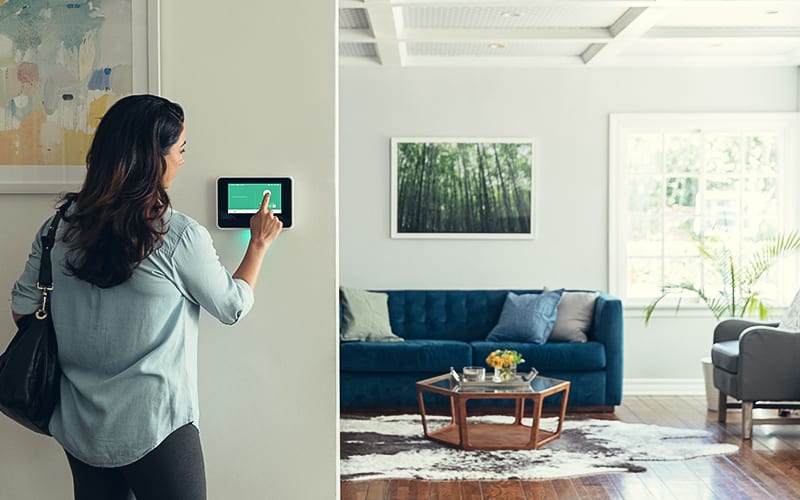
Security systems
Alarm systems are some of the best tools to improve home security. They monitor your home using a suite of sensors like:
Security sensors have descriptive names 99% of the time—you usually know what they do by what it says on the tin. Check out our article on what to look for in a home security system to learn more about each type of sensor.
Start small
Every device in a system communicates with a control panel, which contacts a monitoring center when the alarm goes off—if you pay for a professional monitoring plan. The monitoring center verifies the type of alarm and alerts emergency responders to come to your home.
Most smart home security systems have a mobile app that helps you control everything from your smartphone. This is a killer feature for helping you build your home security habits because alarm systems don’t work when you forget to arm them. If you don’t have a smartphone, you can usually get a cheap key fob for quick arming.
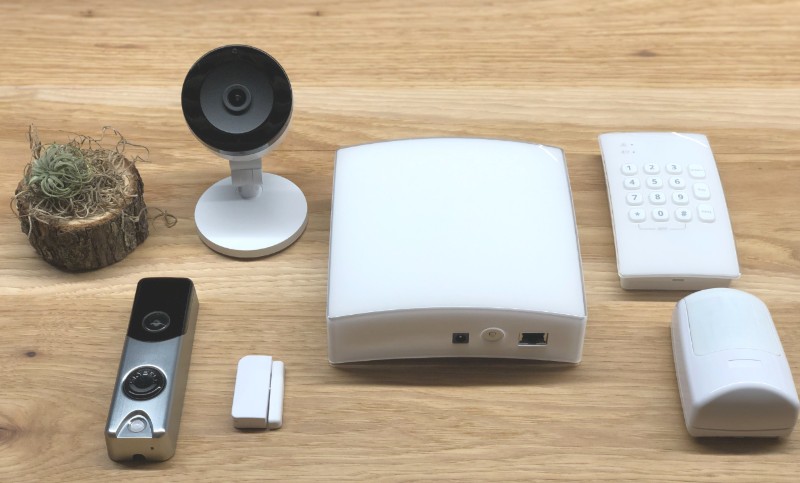
Types of security systems
There are four classes of security systems:
- Professional security systems take a traditional approach that comes with professional installation, has lower starting costs, and almost always requires a long-term monitoring contract. It’s the most expensive type of burglar alarm.
- DIY home security systems make you install all of the equipment yourself (it’s easier than you think), though you’ll pay for it all beforehand. DIY security systems are perfect for renters since they usually don’t have a contract. Instead, you pay for professional monitoring month to month.
- Self-monitored security systems also make you pay for all equipment up front, but there’s no professional monitoring. They rely on you to respond when an alarm goes off. This is the cheapest kind of alarm system because there are no monthly fees.
- Takeover systems use old security system equipment you might have in your house and connect it to security monitoring from a different company.
Check out our article on how professional and DIY installations stack up if you can’t decide which to go with.
Pro tip
Monitoring and equipment costs
Monthly monitoring fees
According to our most recent proprietary research of monitoring prices from 144 national and local security companies, the national average price of alarm monitoring is around $33.29 a month. But you can expect to pay more if you get special features like security cameras and smart home devices (e.g., smart locks, smart lights, and thermostats).
Equipment costs
We also researched equipment costs across 12 national security providers to find the average cost of devices. Here’s a small table with our findings.
| Equipment type | Average cost per device |
| Door and window sensors | $29.05 |
| Motion detectors | $43.40 |
| Glass break sensors | $54.77 |
| Smoke detectors | $65.00 |
| Carbon monoxide detectors | $76.86 |
| Panic buttons | $29.00 |
| Key fobs | $23.00 |
| Indoor security cameras | $163.70 |
Info current as of 08/13/2020. Offers and availability may vary by location and are subject to change.
These averages can help you know if you’re overspending or getting a sweet deal.
Installation costs
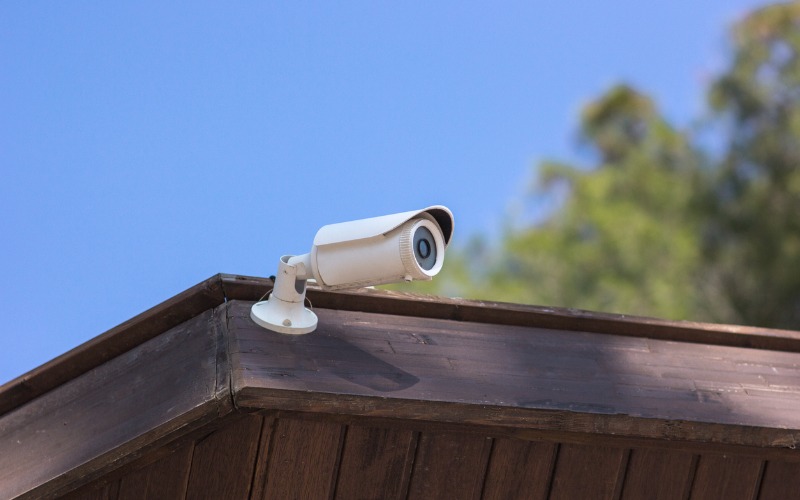
Security cameras
There are two ways to approach security cameras: they can either add to security systems or work as a cheaper, standalone alternative.
Security cameras in alarm systems
Adding a security camera (or video doorbell) to your home alarm system lets you view live footage in your security system’s app. This is convenient if you already have a security system, but it comes with a big drawback: you need to pay for the most expensive monitoring plans to get cameras.
In some cases, this adds only $5 to your monthly bill, which is comparable to what you pay for cloud storage on standalone security cameras. Unfortunately, you’re more likely to spend at least $15 more on your monthly bill.
Even with security cameras in your system, security companies don’t watch your video unless there’s an alarm. The monitoring station doesn’t assign someone to watch over your home 24/7—they react only when there’s a reason to do so.
Another reason to add security cameras to an existing system is that some cities require video verification after an alarm before dispatching police to your home. Video verification also helps you avoid false alarms, which can land you a costly fine.
Save some trouble
Standalone security cameras
We think a camera is a nice middle-ground solution for folks that can’t afford $30 a month for a security system. If nothing else, you’ll have video proof of neighborhood cats taking an unusual interest in your flower beds.
Five innovations make security cameras very affordable today:
- The home Wi-Fi network
- Fast internet speeds
- Smartphones
- Easy installation
- Cloud storage
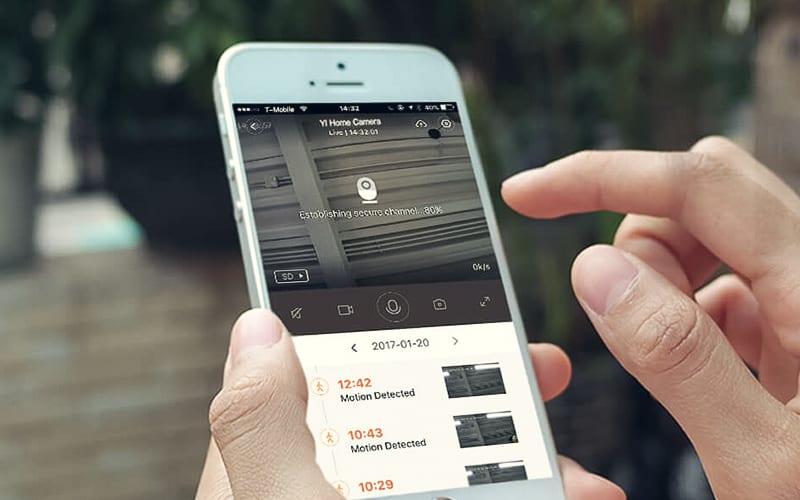
This is a far cry from just 10 years ago when security cameras weren’t easy to install and were so expensive that most consumers didn’t buy them.
Security cameras aren’t only about the video. Most security cameras send smartphone notifications when they detect different types of activity:
- Motion
- Sounds
- People
Some cameras even have facial recognition, so your partner and kids don’t trigger a constant barrage of real-time alerts when they pass by.
Unless you go with a camera that stores video on a microSD card, you can expect to pay for cloud video storage. This costs between $5 and $10 a month on average, depending on how many cameras you have.
With advanced features like these, you get what amounts to a mini security system. Security cameras aren’t a perfect replacement for security systems since they don’t have door and window sensors or professional monitoring.
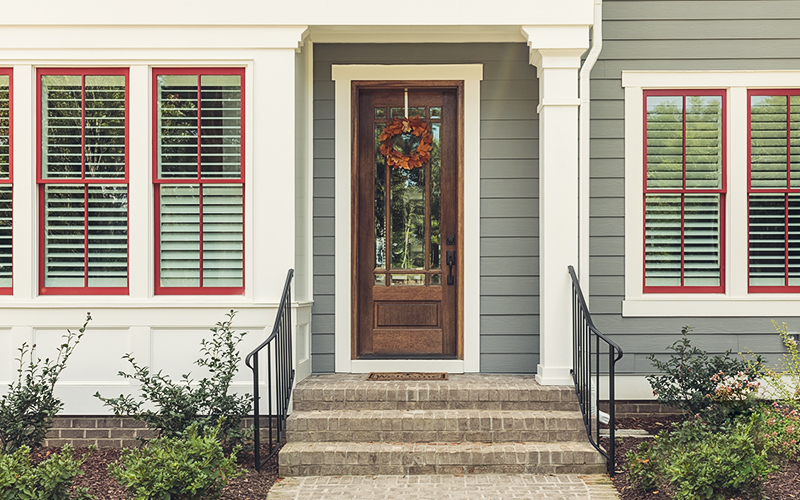
Other security solutions
A lot of home security products don’t fit neatly into a security system but can add an extra bit of protection depending on the layout of your house.
Indoor security
- Consider replacing your front door with a security door that can resist forced entry. You can get a door with a solid wood core, metal cladding, or even a reinforced screen door for summertime airflow.
- If you’re not ready to get a new door or want to save a few bucks, try a door jammer to reinforce your existing door. Door jammers are basically doorstops on steroids.
- If your windows didn’t come with locks or offer only basic fasteners, you could get aftermarket window locks. These can be especially helpful on ground-level windows that are easy to reach.
- Just like the smaller windows in your home, you can also find ways to secure your sliding glass door if all you know is the classic life hack of putting a big stick in the sliding track.
Home security on a budget
Outdoor security
- Motion sensor lights, outdoor security lights, and solar-powered security lights can deter burglars that only come out at night.
- Shore up your shed if you keep a lot of valuable tools out there.
Final word
Home security isn’t only about spending money to ease your troubles—it’s a mindset you build through patience and by practicing good security habits. It’s also about learning where you fall short and striving to be better in the future.
We covered the essentials, but there’s always more to learn about home security. Whether you’re ready to fall down a rabbit hole or have a specific question, consider taking a look at our massive list of frequently asked questions about home security.
Compare the best home security systems
| Brand |
| Lowest monitoring price |
| Starter equipment price |
| Contract required |
| Installation |
| Smart home compatibility |
| Learn more |
| Read review |
|
Best overall
|
Smart home pick
|
No-Contract pick
|
Most well-known
|
Techie pick
|
|
|
|
|
|
|
| $44.99/mo. | $29.99/mo. | $14.99/mo. | $27.99/mo. | $19.00/mo.§ |
| $0.00* | $599.00 | $229.00 | $0.00‡ | $399.99 |
| X No |
X No† |
X No |
✓ Yes |
X No |
| DIY | Pro | DIY | Pro | DIY |
| Amazon Alexa Google Assistant Z-Wave |
Amazon Alexa Google Assistant Z-Wave |
Amazon Alexa Google Assistant |
Amazon Alexa Google Assistant Z-Wave |
Amazon Alexa Google Assistant Z-Wave |
| View packages | View packages | View packages | View packages | View packages |
| Read Review | Read Review | Read Review | Read Review | Read Review |
Info current as of 08/13/2020. Offers and availability may vary by location and are subject to change.
* $0 due up-front with consumer financing.
† No-contract option available only with outright equipment purchase.
‡ With $99 installation charge and new monitoring agreement. Early termination fee applies. See SafeStreets.com for full offer details, terms, and conditions.
§ Professional monitoring provided by Brinks Home Security.
The post Everything You Need to Know about Home Security appeared first on SafeWise.

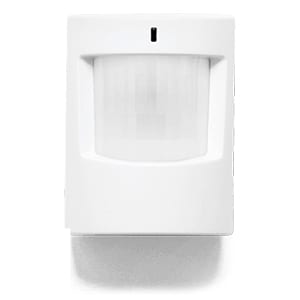
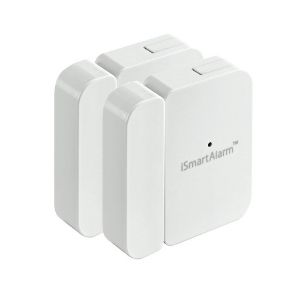
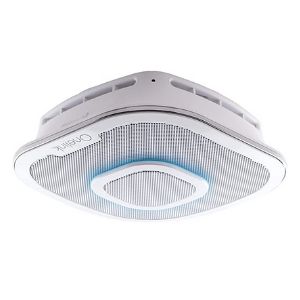

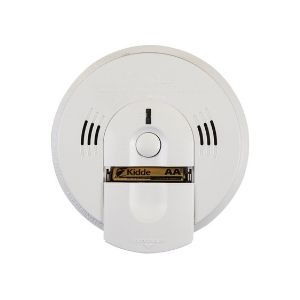
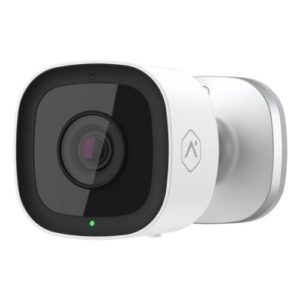

No comments:
Post a Comment